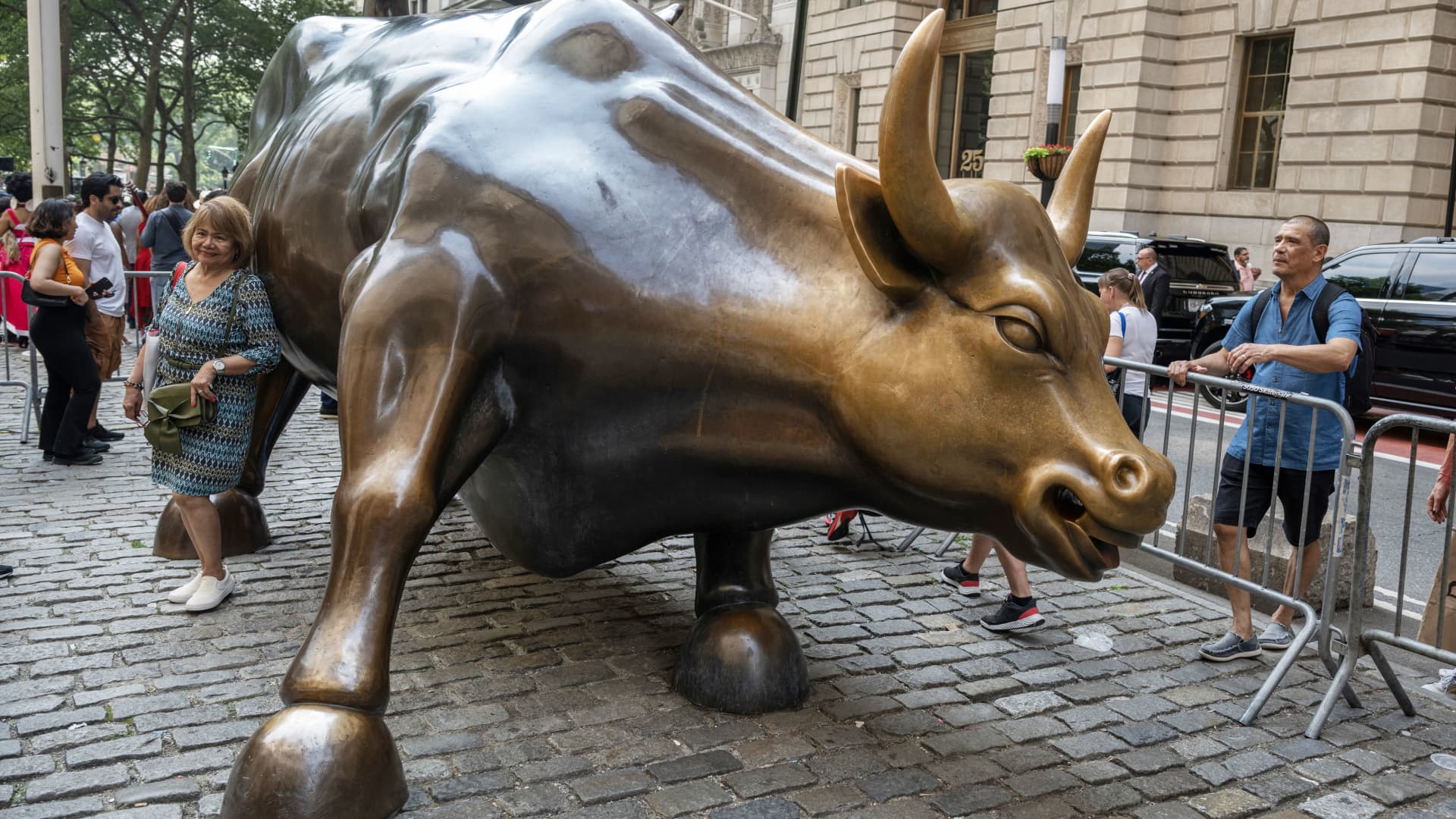Products You May Like
The S&P 500 is up 14% this year, but just eight days that explain most of the gains.
If you want a simple indication of why market timing is not an effective investment strategy, take a look at the data on the S&P 500 year to date.
Nicholas Colas at DataTrek notes that there have only been 11 more up days than down days this year (113 up, 102 down) and yet the S&P 500 is higher by 14% year to date.
How to explain that the S&P is up 14% but the number of up days is about the same as the down days? Just saying “there’s been a rally in big cap tech” does not quite do justice to what has been happening.
Colas notes there are eight days that can explain the majority of the gains, all of them related to the biggest stories of the year: big tech, the banking crisis, interest rates/Federal Reserve, and avoiding recession:
S&P 500: biggest gains this year
- January 6 +2.3% (weak jobs report)
- April 27 +2.0% (META/Facebook shares rally on better than expected earnings)
- January 20 +1.9% (Netflix posts better than expected Q4 sub growth, big tech rallies)
- November 2 +1.9% (10 year Treasury yields decline after Fed meeting)
- May 5 +1.8% (Apple earnings strong, banks rally on JP Morgan upgrade)
- March 16 +1.8% (consortium of large banks placed deposits at First Republic)
- March 14 +1.6% (bank regulators offered deposit guarantees at SVB and Signature Bank)
- March 3 +1.6% (10-year Treasury yields drop below 4%)
Source: DataTrek
The good news: those big issues (big cap tech, interest rates, avoiding recession) “remain relevant now and are the most likely catalysts for a further U.S. equity rally,” Colas says.
The bad news: had you not been in the markets on those eight days, your returns would be considerably worse.
Why market timing does not work
Colas is illustrating a problem that has been known to stock researchers for decades: market timing — the idea that you can predict the future direction of stock prices, and act accordingly — is not a successful investing strategy.
Here, Colas is implying that had an investor not been in the market on those eight best days, returns would have been very different.
This is not only true for 2023: it is true for every year.
In theory, putting money into the market when prices are down, then selling when they are higher, then buying when they are low again, in an infinite loop, is the perfect way to own stocks.
The problem is, no one has consistently been able to identify market tops and bottoms, and the cost of not being in the market on the most important days is devastating to a long-term portfolio.
I devote a chapter in my book, “Shut Up and Keep Talking: Lessons on Life and Investing from the Floor of the New York Stock Exchange,” to why market timing doesn’t work.
Here’s a hypothetical example of an investment in the S&P 500 over 50 years.
Hypothetical growth of $1,000 invested in the S&P 500 in 1970
(through August 2019)
- Total return $138,908
- Minus the best performing day $124,491
- Minus the best 5 days $90,171
- Minus the best 15 days $52,246
- Minus the best 25 days $32,763
Source: Dimensional Funds
These are amazing statistics. Missing just one day — the best day — in the last 50 years means you are making more than $14,000 less. That is 10% less money — for not being in the market on one day.
Miss the best 15 days, and you have 35% less money.
You can show this with virtually any year, or any time period. This of course works in reverse: not being in the market on the worst days would have made returns higher.
But no one knows when those days will occur.
Why is it so difficult to time the market? Because you must be right twice: you must be right going in, and going out. The probability you will be able to make both decisions and beat the market is very small.
This is why indexing and staying with the markets has been slowly gaining adherents for the past 50 years. The key to investing is not market timing: it is consistent investing, and understanding your own risk tolerance.
